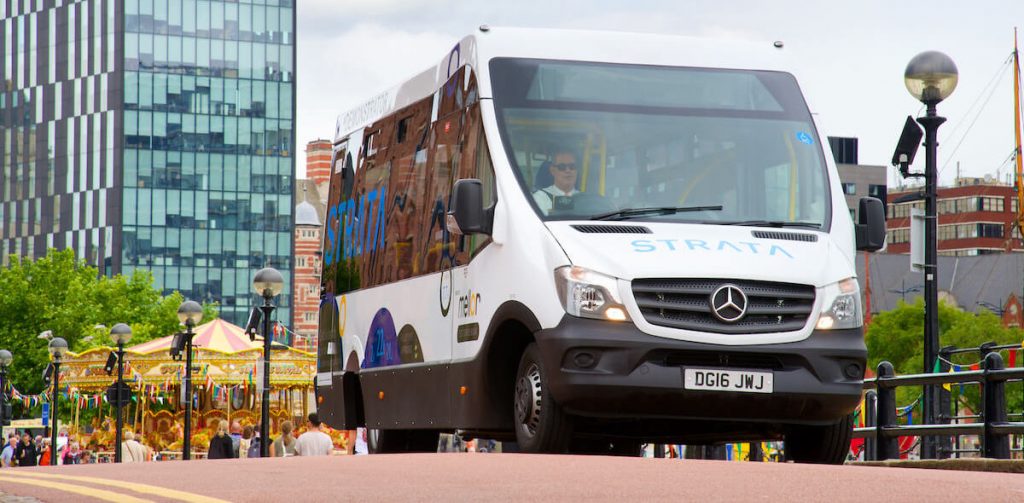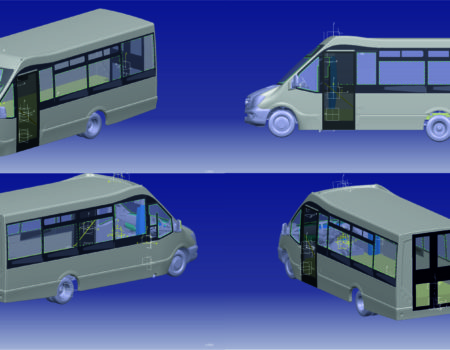 December 6, 2016
December 6, 2016
Size Appropriate Buses Could Save Subsidised Bus Service Routes

Local bus services across the country are becoming increasingly difficult to access for residents in need of reliable transport. According to research conducted by the Local Government Association, subsidised bus services have taken a significant hit in 2016 – with options being cut by over 12% over the last twelve months.
While the department for transport have said that they will begin working with local transportation companies to offer improved services to the masses, the truth is that it seems most government officials simply don’t know how to rectify the problem.
Addressing the transport crisis
Research into the transportation situation currently known as “buses in crisis” reveals a range of worrying statistics, including:
- The loss of £22.2 million in total funding for supported buses in England throughout 2015 and 2016.
- A loss of £78 million since 2010-2011 from funding for supported bus services in England and Wales.
- 40 authorities throughout England and Wales have cut 10% or more from their funding for buses in 2015-2016, with 11 local authorities offering nothing to supported bus services.
- The increase of local bus fares within England by around 61% on average between March 2005 and March 2015. In metropolitan areas, the bus fare rates are rising even faster at around 71%.

Image credit: Lloyd Rich via Flickr. Licensed under Creative Commons 2.0
In response to these findings, the manager of Mellor, Mr. John Randerson, wrote a letter to the transport minister highlighting a key reason why the transport industry is currently losing money. Many people assume that the buses simply don’t get enough passengers – but the truth is that the real problem is that buses aren’t appropriately sized.
Recognising the Problems with Bus Sizes
While many people have grown accustomed to an “average” size for buses in today’s society. The truth is that these buses are often too large for certain routes that don’t get as much custom. In routes with a consistently limited amount of passengers, the solution shouldn’t be to remove subsidised bus services entirely, but to create a more cost-effective solution by reducing the size of the bus being used.
As Mr. John Randerson said in his letter:
“We are acutely aware of the ongoing need for local authorities to help maintain regular bus services to areas that do not have high levels of passenger patronage.”
The size of modern buses is currently a transportation issues that people often don’t talk about. However, simply reducing the size of the bus to match the number of passengers available on any given route, the costs associated with subsidised travel are significantly improved.
Why Size Appropriate Buses Will Help
Small buses reduce the costs associated with transportation in a given area for a number of reasons. Because they are smaller, more size-appropriate buses are lighter, and more fuel-efficient, meaning that they don’t cost nearly as much to run as the modern buses that are available on the roads today. In other words, these smaller buses will allow for the government to get more miles to the gallon, while still offering an essential service to local patrons.
As Mr. Randerson notes:
“this reinforces our belief that a size-appropriate bus is the key in helping to maintain a local bus service at a much-reduced cost.”

On top of that, smaller buses are inherently better for the environment, because they run with far lower emissions than standard buses. These compact vehicles allow for the right amount of transportation solutions to be given to any specific route, without causing additional problems for the government in regards to CO2 emissions and significant fuel expense.
Relieving the Pressure for Local Bus Services
Today, local bus services across the country are under a significant amount of pressure to continue providing some manner of service to their patrons, despite the number of government cuts that are being made to their funding solutions. Because of this, the hope is that Mr. John Randerson’s letter will help the transport office to see sense when making the connection between size and expense.
John even issued an invitation to the transport minister asking him to come and see the difference that a “size appropriate bus might make”.
After all, it isn’t enough to simply allow bus services to die out in certain areas of the country. The truth is that many elderly people and families are being left isolated because they simply can’t find transport that suits their needs. Indeed, many experts are concerned that unless the Government commits to proper funding and transport solutions, disabled and elderly people around the country will be left stranded with nowhere to use their free bus passes.
A change in size could be a win/win situation, for both bus patrons, and the government.







